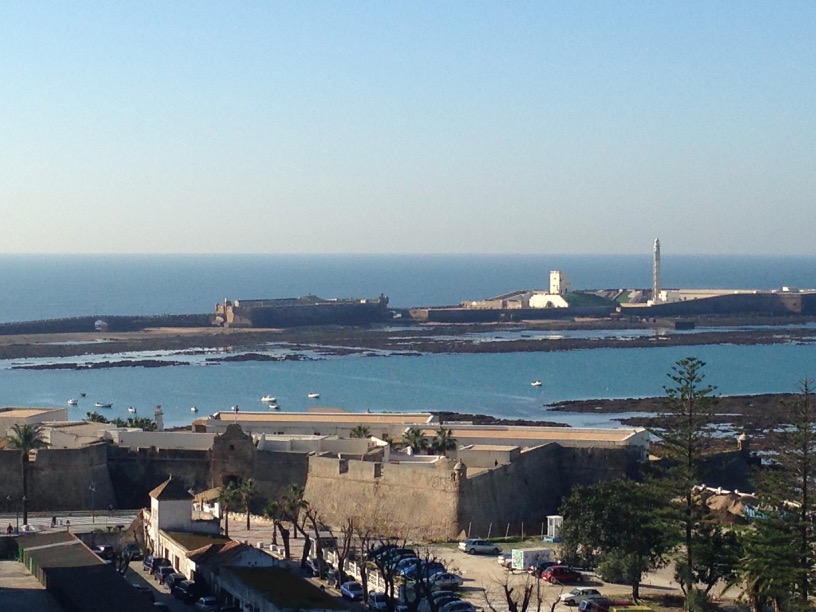Cádiz - Christmas in Spain
last update: 20 Nov. 2019
Christmas and Christmas Eve are respectively called Navidad and Nochebuena in Spanish (New Year’s Eve is Nochevieja). As in many parts of the world Christmas eve is reserved for a family dinner. In fact, despite organising a special Christmas dinner with cocktails, our hotel still warned us that they would not be providing room or bar services and that dinner would be served early (for Spain) in order to allow staff to get home for a late family meal. That’s how important the Christmas Eve family dinner is in Spain!
Christmas traditions are similar in many parts of the Christian world. It is a family event, and it involves food, drink, some music and dancing, and the custom of giving. But Spain also has some more specific traditions, although some depend upon regional practices. For examples presents are brought on the night of the 5th January by the Three Kings (Los Reyes Magos), just as in Italy where they are brought also on the same night by the old lady Befana. And the presents are left in the shoes or boots put out by the children.
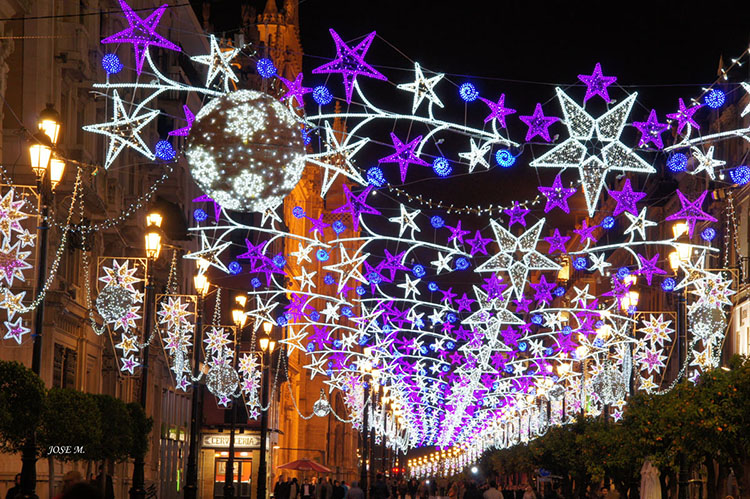
As in many parts of the world Christmas starts in mid-November with street decorations and preparations in all the major stores and shops. TV publicity also starts to push toys and perfumes at about the same time.
Very specific to Spain, you can consider that Christmas starts on the 22nd December. Schools are closed on or before the 22nd, and most importantly there is the Christmas Lottery (Sorteo Extraordinario de la Lotería de Navidad). This Spanish lottery has been operating since 1763 and the Christmas Lottery is the most important of the year and was introduced in 1812 (although it only got its Christmas name in 1892). In fact even during the Spanish Civil War each side held its own Christmas lottery. The Christmas Lottery is considered the biggest lottery worldwide. The draw is transmitted over almost all the Spanish radio and TV programs, and the children of San Ildefonso sing the winning numbers (video). There are quite a number of winners, but the first prize is called el gordo, and each winner can receive something like €4 million. As far as I can tell this lottery consists of more than 15 million tickets (multiple 'serie' of tickets), each ticket (billete) has a price of €200, but each consisting of 10 parts (décimos) of €20 each. I heard that this means collecting in excess of €3.2 billion, with payouts reaching €2.24 billion (70%). Considering that there are in circulation more than 160 million décimos. I’m told that there were more than 24 million winners. There are a number of stories about the lottery. One involves a business man who bought tickets for all his staff and a different one for himself. He won the first prize. Another story is about two friends who bought tickets, one in Madrid and the other in Sevilla, they won the first and second prizes. More recently one of the people in the audience watching the draw actually won €125,000. However over the last 10 years there have also been a series of El Gordo scams on the Web.
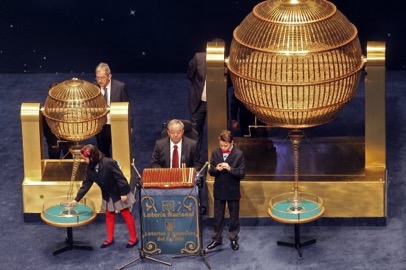
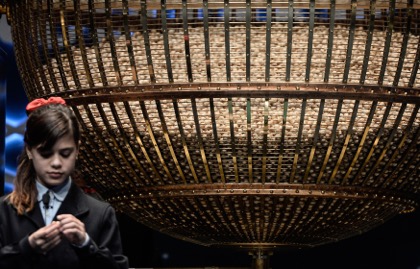
The 24th December is for the family dinner which might include seafood (mariscos), fish (pescardos) such as bream, sea bass, hake, and meats such as suckling pig, lamb, turkey and ham. The Spanish also have some typical Christmas sweets (dulces típicos navideños) such as nougat (turrón), marzipan (mazapán) and polvorón, which is a kind of very crumbly shortbread typical to Andalusia. This last delicacy has its origins with the Moors (possibly the biscuit quarabiya), but during the Inquisition it was decreed that it be made with pork fat as a way to detect secret Jews and Muslims. The Spanish will drink wine (vino), cider (sidra) and cava, their sparkling wine. Surprisingly cider is a very popular Christmas drink, and in fact in Spain cider is associated with all types of festive events. Christmas is the moment when the Spanish consume the most cava. Clearly price is a factor, as is the desire to support a national product. However cava is also slightly less acid (or dry) and tends towards a blanc de blanc. It is said that cava goes better with seafood than Champagne.

Some people still remember when bars and restaurants were not open on the 24th December, the evening was exclusively reserved for the family dinner. Now the world has changed and they even celebrate with fireworks and ‘crackers' (petardos).
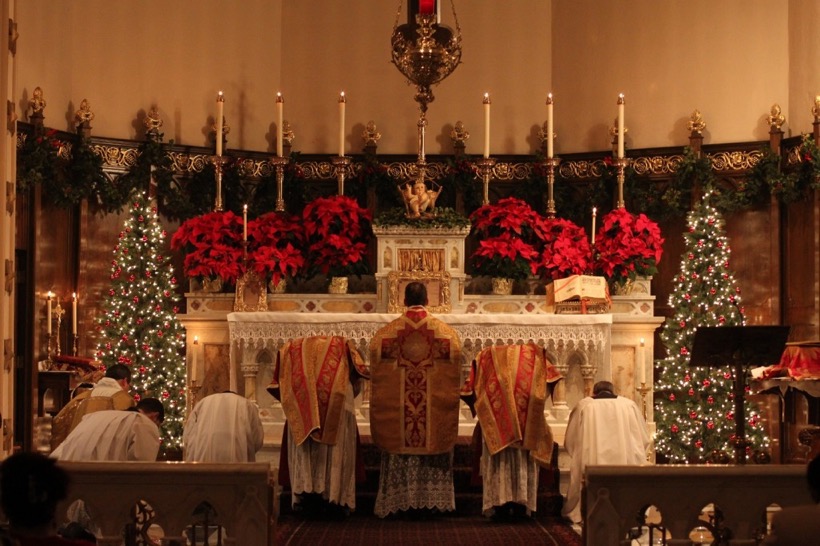
Tradition has it that the Spanish family will then go to “Midnight Mass”, the traditional “Misa del Gallo”, also often know as “Misa de los Pastores”. Apparently the chicken was the first animal to witness the birth of Jesus and announce it to the world. I understand that fewer and fewer people go to this Midnight Mass, preferring to go out with friends. But many families still have the tradition of lighting a small oil lamp on the 24th, and some still venture out to hear Midnight Mass.
The Spanish still today also create a Belén (for Bethlehem), a nativity scene with small figures representing the birth of Jesus. These scenes were well known in Italy, and were introduced into Spain in the 15th C. It is said that the Christmas tree is not as common or as important in Spain as the nativity scene.
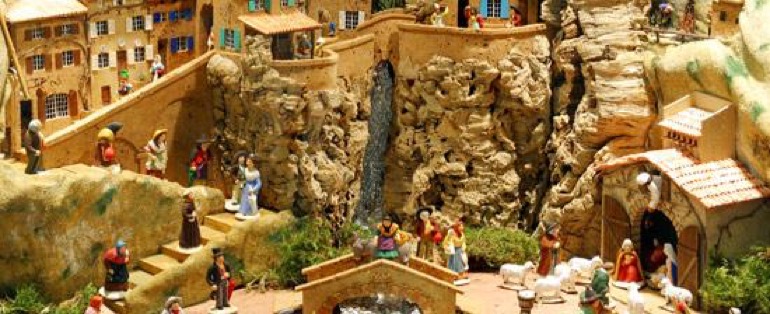
Carols are a very strong tradition in Spain. In the past children would often sing carols in the streets looking for some coins or sweets. I’m told that this tradition has stopped in the cities, but still exists in some villages.
On the 25th December there will be another meal. In some regions of Spain this meal is the most important, and is an excuse to get out the best porcelain. In the past some regions preferred lamb, but today seafood and chicken have become the ‘traditional’ meal. Again in some regions gifts are distributed. In some of the regions such as Cataluña, the biggest meal was traditionally on the 26th December, St. Esteban (St. Stephen).
On the 28th December the Spanish have a rather odd additional celebration. This day is said to be the one on which King Herod killed all the newborn children, and is called El día de los Santos Inocentes. The Spanish custom is to exchange jokes (bromas y chistes) with friends and family, and also to play jokes on people. The newspapers and television have the habit of reporting on totally fictive and unbelievable events.
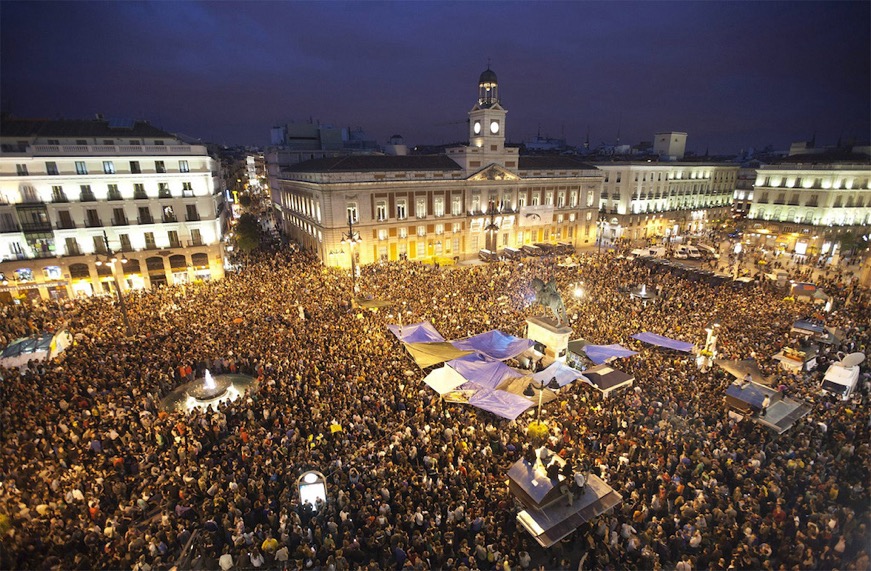
The last day of the year (New Year’s Eve) is called Nochevieja. Naturally this is another excuse for a big dinner, but this can just as easily be in a local restaurant as at home. The Spanish have a very specific tradition, the 12 grapes (doce uvas de la suerte). You are often given a small pack or bag with 12 grapes. The tradition is to eat one grape for each of the 12 chimes signaling the end of the year. If you eat all 12 grapes you will prosper throughout the coming 12 months. Then you must kiss everyone nearby and drink more cava. Everyone watches the TV and counts down the chimes of a clock in one of Madrid’s famous squares La Puerta del Sol. Often there will be music, dancing and an open bar until the early hours of the morning. Also everyone is expected to wear red underwear.

I’m told that the tradition of the 12 grapes dates back to before 1882 but became popular in 1909 when winemakers from Alicante started distributing surplus grapes.

Another date very specific to Spanish traditions is the 5th and 6th of January (the 12th night). In the afternoon of the 5th, the Three Kings (Los Reyes Magos) parade (maybe even on horseback but almost certainly on floats) through the cities and towns distributing sweets. Children ask for their presents, which are distributed on the night of the 5th. The parade usually ends at the Town Hall, where the Three Kings say a few words to all the children. Tradition has it that the children should leave out their shoes (the presents should be left in the shoes), along with some food for the Kings (and water for their camels). If the children are asleep and have been good throughout the year they will receive some gifts. If not, the children just receive carbón dulce (a kind of black sweet). On the 6th (Epiphany) the children can play with their presents, and get a chance to visit relatives to pick up some more presents that the Three Kings left with them.
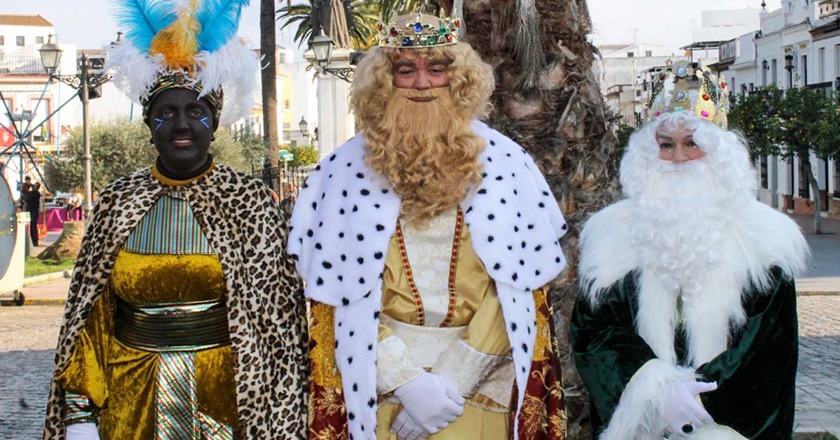
Again Spanish tradition has it that Melchor carries gold, and is an old man with a white beard. Gaspar has incense, and is younger with brown hair. And finally Baltasar carries myrrh, and is a black man (and represents future suffering and death).
Also on the 6th January you are supposed to eat a specific type of cake, the roscón de reyes. This is a kind of thick-crust pastry ring decorated with candied fruit. There is usually a ‘surprise’ included in each cake, and the person who finds it is crowned King or Queen of the house.
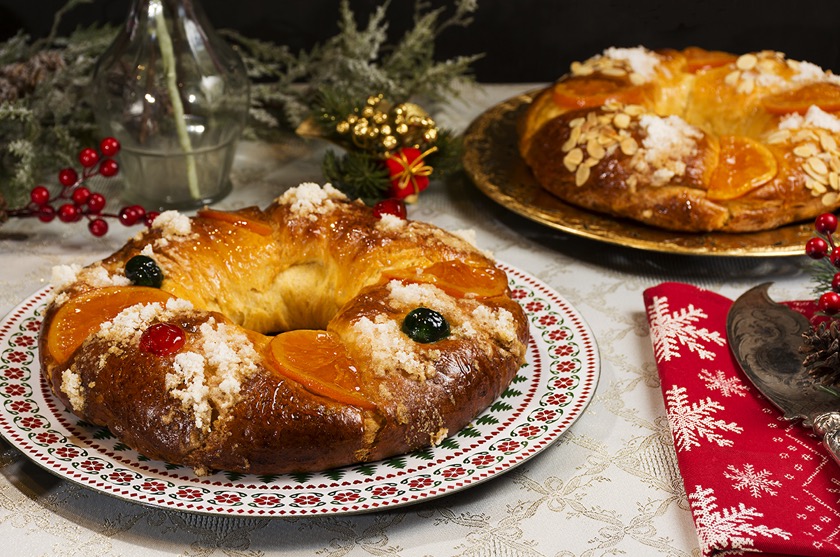
I’m also told that today children now get most of their presents on the 25th December, so that they have a chance to play with their toys before going back to school. But some parents still try to maintain the illusion of the 12th night.
Of course it is worth noting that in the Bible there is only the mention of ‘Magi', not Kings, nor three of them (but they did bring three gifts). These ‘extra’ traditions were added centuries later. One later addition was the idea that the Magi came from Europe, Asia and Africa. But recently Pope Benedict XVI has suggested that one of the Magi (or even all three) might have come from the antique region of Tartessos, originally located between Huelva, Cadiz and Sevilla.
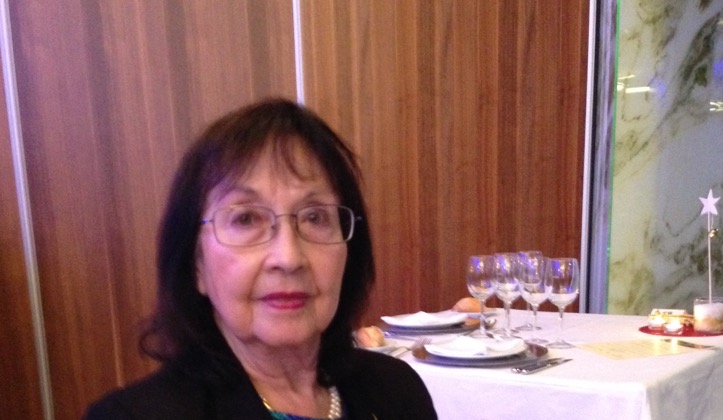
Our Christmas Eve meal in the hotel was average, served rapidly, and with almost no atmosphere. For me the only memorable dish was the lamb, but Monique did not like that, however she appreciated the starter.
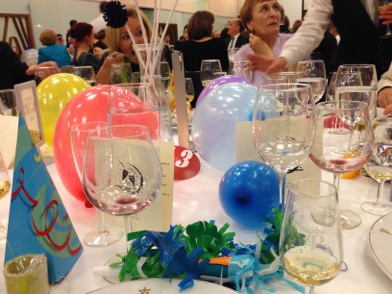
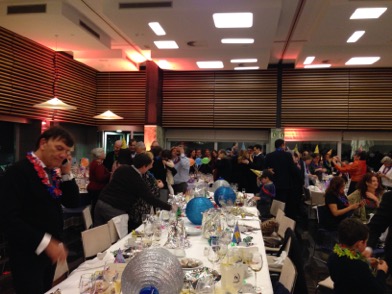

And finally here we have the New Year celebrations, which were completely different from Christmas. The food was good, and we were on a very friendly table (Spanish-Swiss-English-French). We ate our 12 grapes, drunk lots of cava, and danced until the early morning. The next day (New Years day) ‘our’ table went out for a 3-4 hour afternoon stroll around the city.

And to top it all, above we have a few photographs of our hotel, and the fantastic views from our room on the top (7th) floor.
